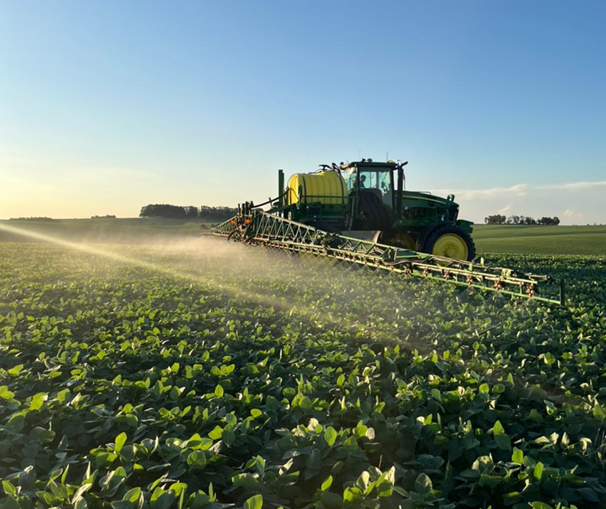Currently, agricultural spraying is extremely important for rural producers, as they help to control most of the variables that threaten their crops. On the other hand, the chemicals used during the harvest can also be seen as villains in the budget, due to their high value.
If it is necessary to reapply the product, the values can further affect the producer's pocket. Incorrect environmental conditions are the main factors that lead to product ineffectiveness, forcing the farmer to perform more than one application.
Therefore, in order to increase the potential of the application, it is important to be aware of the weather conditions, making the product – and, consequently, the money invested in it – much more efficient.
Next, we will talk about the ideal climatic variables and the most important aspects in the mixture.
Temperature
Temperature is one of the biggest influencers in a spraying, and can be a limiting factor when it is very high and, in some cases, when it is low.
If the temperature is high at the sprayns time, the process of evaporation of mixture will occur, resulting in an upward thermal current. In this way, when the droplet is released by the spraying process, there will be a current that will go against the desired direction of the droplet, making it stay in the air longer. This makes it more difficult for the drop to reach its target and increases the possibility that it will be blown in other directions by wind currents.
Application at temperatures up to 32°C is recommended. For low temperatures (less than 15°C), it is important to observe certain types of products. Systemic and the translocation ones, for example, will not work effectively at low temperatures, as the plant's metabolism will also be low, making the absorption and action of these products difficult.
Relative humidity
The relative humidity of the air is considered as the most important climatic variable to be analyzed at the time of application, since it is the main responsible for the evaporation of a spray drop.
The droplet, when released from the spraying process to reach the target, will lose moisture until the end of its trajectory. The lower the percentage of moisture in the air, the faster this process will occur, so that, in many cases, the drop does not even reach the target. Therefore, it is important to always check the relative humidity, which, in normal applications, should not be below 55%, nor higher than 95%.
winds
In a very strong wind situation, the application can generate drift. This occurs when the particles released by spraying do not adequately reach their target, reaching other locations.
Calm situations, when the wind speed is between 0 and 2 km/h, also require attention. Under these conditions, a phenomenon called thermal inversion occurs, when hot air is deposited in a layer close to the ground, being retained by a layer of cold air. This causes the particles to remain in suspension for a longer time, causing losses, in an indirect way.
The ideal speed conditions are above 2 km/h, while the maximum speed should remain between 10 and 12 km/h.
rain conditions
In rainy conditions, the leaves will be washed, leading to losses in the entire product that will be deposited on the leaf. In this case, it is important that the producer is aware of the rain forecasts that will come after the application, since the plant needs time to fully absorb the product.

Mixture preparation
The optimization of the operational capacity of sprayers has encouraged the application of increasingly complex solutions, notably due to the use of mixtures containing phytosanitary agents, adjuvants and foliar fertilizers.
It is common to call the sprayers that the mixtures can activate before the sprayers are put into effect, through what is conventionally called the “spray test”.
Although not designed for this field, an it is often described in the field as a comparison for this test an it is often described as a ratio on the technical tank. In this sense, the operator must mix the products on a scale and tank, simulating the mixing sequence exactly as the products and water occur exactly in the sprayer. This can be done by dosing the products and components of the syrup with tests and syringes. With the use of these elements it is possible to be optimized or sprayed on the elements that can be designed for the previous preparation of the problems.
In practical terms, it is recommended that the easy mix sequence in the sprayer tank or spray mix is referenced from “ the easiest” to “the hardest”:
1st - Put water in the tank or mixer;
2nd - Prestigious league;
3rd - Placement of spray conditioning adjuvants, surfactants and emulsifiers;
4th - Placement of substances highly soluble in water (solid or liquid);
5th - Placement of concentrated liquids;
6th - Place fertilizers, micronutrients and other adjuvants;
7th - Protection of oil-based products.




